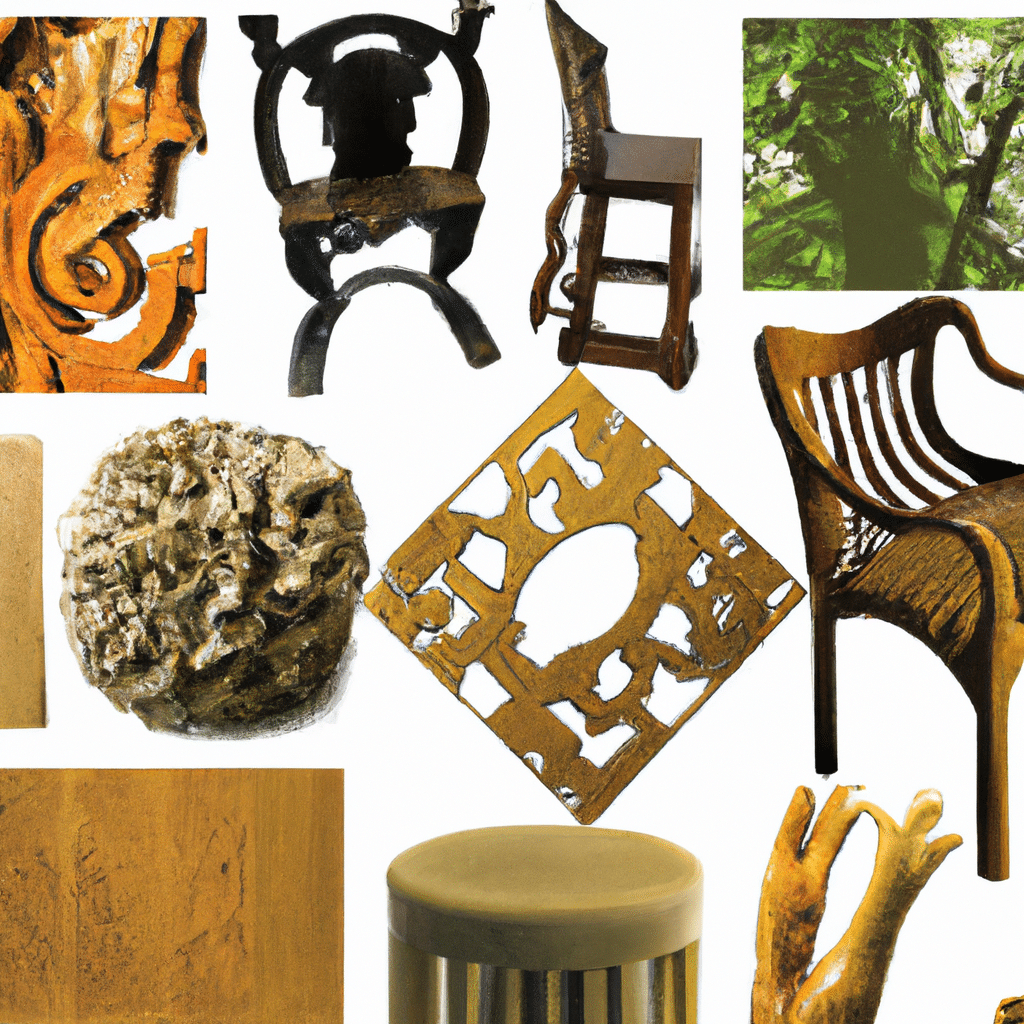Wood has been a fundamental material in human civilization for centuries, serving as a versatile resource for construction, furniture, and various other applications. While popular wood species like oak, pine, and mahogany often take the spotlight, there are numerous lesser-known wood species that possess unique characteristics and valuable benefits. In this article, we delve into the world of these wooden wonders, exploring their distinct features, advantages, and potential applications. Join us on this journey as we uncover the hidden gems of the woodworking realm.

1. The Allure of Amboyna Burl
One of the most visually captivating wood species is Amboyna Burl. This exotic hardwood is renowned for its intricate grain patterns, which can range from mesmerizing swirls to interlocking waves. The rich reddish-brown hue of Amboyna Burl adds to its allure, making it a popular choice for high-end furniture and decorative items. Its rarity and natural beauty make it highly sought after by fine craftsmen and collectors alike.
Amboyna Burl’s unique characteristics extend beyond its stunning appearance. It boasts exceptional durability and stability, ensuring longevity in its applications. Additionally, this wood species exhibits excellent resistance to moisture and decay, making it suitable for both indoor and outdoor use. From luxurious cabinets to exquisite jewelry boxes, Amboyna Burl adds a touch of elegance to any project.
2. The Strength of Tigerwood
If you’re seeking a wood species with exceptional strength and durability, look no further than Tigerwood. Also known as Goncalo Alves, this tropical hardwood hails from Central and South America. Its distinctive orange-brown to reddish-brown color, coupled with dark streaks resembling tiger stripes, gives Tigerwood its name.
Beyond its striking appearance, Tigerwood possesses remarkable strength properties. It boasts a high Janka hardness rating, making it highly resistant to wear and tear. This robustness, combined with its natural resistance to rot and decay, makes Tigerwood an ideal choice for decking, outdoor furniture, and other applications that require durability in challenging environments.
3. The Versatility of Black Locust
Black Locust, a native North American wood species, is renowned for its versatility and exceptional strength. Its distinct golden to light brown color, often accompanied by dark streaks, adds warmth and character to any project. Black Locust has a long history of use in construction, particularly for outdoor applications such as decking, siding, and fence posts.
One of the key advantages of Black Locust is its natural resistance to decay and insect infestation. This makes it an excellent choice for outdoor structures, as it can withstand the harshest climates and environmental conditions. Furthermore, Black Locust’s durability rivals that of tropical hardwoods while being more sustainable and readily available.
4. The Beauty of Lacewood
Lacewood, also known as Leopardwood or London Plane, is a unique wood species that captivates with its distinctive grain patterns. The name “Lacewood” derives from the delicate, lace-like appearance created by the medullary rays that traverse the wood. These rays, when cut at certain angles, produce mesmerizing figures resembling ferns or spider webs.
Beyond its aesthetic appeal, Lacewood possesses excellent stability and workability. It is often used in cabinetry, fine furniture, and musical instruments due to its acoustic properties. Additionally, Lacewood’s moderate density makes it relatively lightweight, allowing for easier handling and transportation.
5. The Durability of Ipe
Ipe, also known as Brazilian Walnut, is a dense tropical hardwood renowned for its exceptional durability and resistance to wear. Originating from the forests of South America, Ipe showcases a range of deep brown tones, often accompanied by olive and red undertones. This wood species possesses an inherent natural resistance to rot, decay, and insect attack, making it highly suitable for outdoor applications.
One of the notable features of Ipe is its longevity. With proper maintenance, Ipe can easily withstand several decades of use without showing signs of deterioration. This makes it a popular choice for decking, boardwalks, and other structures exposed to harsh weather conditions. Its dense nature also contributes to its resistance against scratches and dents, ensuring a long-lasting and visually appealing surface.
6. The Elegance of Purpleheart
Purpleheart, as its name suggests, showcases a striking purple color that develops over time through exposure to light. This tropical hardwood originates from Central and South America and is highly regarded for its exceptional strength, density, and durability. Its vibrant hues make it a favorite among craftsmen and designers seeking to add a touch of uniqueness to their creations.
In addition to its aesthetic appeal, Purpleheart possesses impressive mechanical properties. It has a high Janka hardness rating, surpassing many popular wood species. This attribute, combined with its natural resistance to decay and insect attack, makes Purpleheart an excellent choice for flooring, decking, and high-impact applications.
7. The Sustainability of Bamboo
While not strictly categorized as a wood species, Bamboo deserves a mention due to its eco-friendly nature and versatility. Bamboo is a type of grass that grows abundantly in various regions across the globe. Its rapid growth and regenerative properties make it a highly sustainable alternative to traditional hardwoods.
Bamboo possesses remarkable strength and durability, rivaling that of many wood species. Its unique fiber structure gives it exceptional tensile strength, making it an ideal choice for flooring, furniture, and even structural applications. Furthermore, Bamboo is highly resistant to moisture and can thrive in environments where other wood species may deteriorate.
In Conclusion
Woodworking enthusiasts and professionals alike can expand their horizons by exploring the unique characteristics and benefits offered by lesser-known wood species. From the visually captivating Amboyna Burl to the sustainable versatility of Bamboo, each wood species brings its own charm and advantages to the table. By embracing these wooden wonders, we can unlock a world of creative possibilities while contributing to a more sustainable future. So, dare to venture beyond the familiar and discover the hidden gems that lie within the lesser-known wood species.








